TAKEAWAY: When it comes to tablet editions, there is no doubt that you need to recruit the most creative minds for the task. And, so, publishers and editors constantly ask me: how do you find the most creative people in the team?
Finding your most creative people. It’s easy

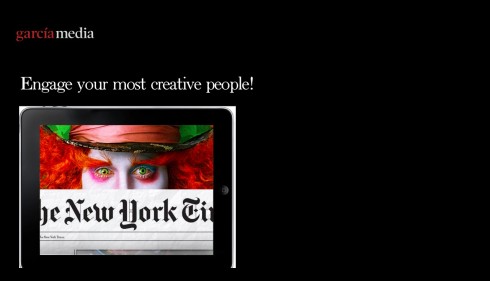
Illustration courtesy of Joe Zeff Design (http://joezeffdesign.com/)
At the very end of my tablet publishing workshops, I always put an image on the screen, courtesy of my super creative and talented friend, Joe Zeff. It is a straightforward visual that is colorful and says it all quickly. Above it, my headline: Engage your most creative people!
Indeed, that is my send off at the end of what is usually a full day of discussions for newspapers and magazines taking their first steps into tablet publishing.
Each day that I spend involved int he creation of iPad apps, the more I realize how important creative people are in the process.
But it never fails: usually as we wrap things up, the publisher or editors will ask me to expand on the subject of creative people and creativity.
These are some of the key questions:
Where are the creative people in the newsroom?
They are not going to have a letter C stamped over their foreheads, that’s for sure. And they are not going to congregate in one specific spot of the newsroom. Indeed, they may be everywhere, from the reporter who manages to break the rules and come up with sort of invisible stories that nobody else sees; the editor who writes headlines that are often better than the stories they accompany; the photographer who sometimes gets on his knees to take an unusual angle on a not so unusual subject; the designer who can take a dull subject, with no images, and rescue it all visually with a sumptously appealing type attack.
I also know that sometimes the creative are not even aware that they are blessed with those creative traits. It is called “freeing the creative mind” and good managers I have observed in my career, do manage to encourage the process, with great results.
What is creativity? Who are the real creative types
Creativity is not just about inventing what isn’t there, but can also be giving what is there new definitions, new uses. Think Steve Jobs, the iconic Apple CEO sometimes described as “the man who changed everything”. At the time of his death, many who rendered him tributes expressed what we already knew. Steve Jobs was not so much about inventing, but about finding new, easier, more pleasant ways of using what existed. He observed that people who exercised like to listen to music, so why not create the smallest gadget that one could attach to the arm, as in the iPod. In an interview with Wired magazine of 1995, Jobs said:
Creativity is just connecting things. When you ask creative people how they did something, they feel a little guilty because they didn’t really do it, they just saw something. It seemed obvious to them after a while. That’s because they were able to connect experiences they’ve had and synthesize new things. And the reason they were able to do that was that they’ve had more experiences or they have thought more about their experiences than other people.
Other creative luminaries have philosophized about the creative process, including Michalangelo who’s supposed to have said that he didn’t create his sculptures—-all he did was uncover what was already there.
To these extremely creative men, creativity is nothing more than going beyond the current boundaries, whether those are the boundaries of technology, knowledge, social norms or beliefs.
In that sense, Beethoven’s Fifth Symphony and Sondheim’s Follies qualify, but so does the special navigation that your editor has deviced for the newspaper’s tablet edition.
At this point, it comes to creating——making something out of nothing, for example. Or, synthesizing, which is relating two or more previously unrelated phenomena, as is the process of converting a printed newspaper into a tablet edition. What emerges is new, combining a series of processes, all creative, but based on raw material that has existed. The most creative people are those who can see relationships and move to advance them, combine them and come up with what may be described as a “totally creative and new product”.
Let’s not forget modification as creative, too
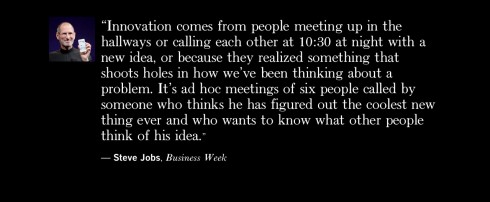
Perhaps among the most creative work carried out today in the media business is that of people who modify existing models. Modification, the act of altering something that already exists so that it can perform better, or perform a new function, is key to progress today.
In my travels and visits to newsrooms globally, I see a tremendous amount of very creative modifications taking place.
It all begins with the creative impulse of managers who take the familiar and emphasize how it can perform in a different setting.
We have seen newspapers in the US, as in the case of the Detroit Free Press and the Christian Science Monitor, adapt to different publication schedules, as opposed to the daily model; others, like The Washington Post, have rethought their Sunday edition, anticipating the “lean back” and more relaxed nature of readers on that specific day. In Malaysia, the New Straits Times has done well by adding 3D technology for content and advertising on certain days of the month.
The myths of creativity
Are creative people born with a special gene that allows them to see or hear what others don’t?
I am not a scientist, but my answer would be an emphatic NO. I think that everyone has the capacity to think creatively. Indeed, for some people we all know it comes naturally. But, for the rest of us, there are techniques to stimulate the process.
In my own experience, I encourage stimulation of the creative processes. And I do this routinely and not at a scheduled time of the day or night. You must leave the door open for creative breezes to enter. For me, it is a constant appetite for looking at everything that surrounds me. Sometimes I see incredible shapes by just looking at titles that gather on the floor at my feet; I look at doors of buildings, the colors of everything, not to mention any contact of ink with a variety of surfaces: as in type, color, space and distance.
And you use both sides of your brain for this. The right brain, given much credit for whatever creativity emerges from us, is the intuitive, creative, non verbal type, while the left brain is more analytical, geared towards problem solving.
As designers, we need both. The right brain will give you the idea: how the titles on the floor could provide for texture within a page or screen; the left brain helps you put the idea together and get it executed. Once the idea hit you, the left brain shifts into gear as you start bringing the idea to life on paper or screen. Experts tell us that the highest creative performance takes place when both sides are in function.
Be curious to be creative
It is important to continue to be curious, no matter how many years you have been in this business.
The creative people I know never push the automatic pilot button. In fact, they tend to be very fond of that button with the question mark on it.
And, indeed, curious people use all of their senses. And, don’t let anyone fool you with the idea that the very creative are loners, working in a sort of Frankenstein laboratory. Nonsense. Creative people don’t exist in a vacuum.
Creative people work in teams. Indeed, the most creative projects in which I have participated involved teams of gifted, curious people.
These projects stand out in my mind for the creative process
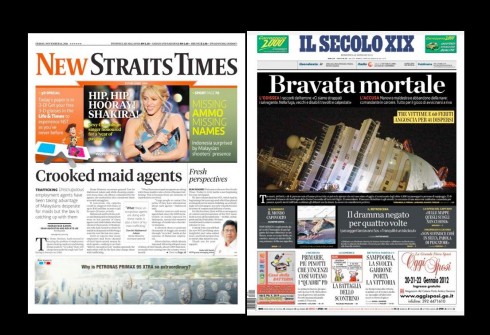
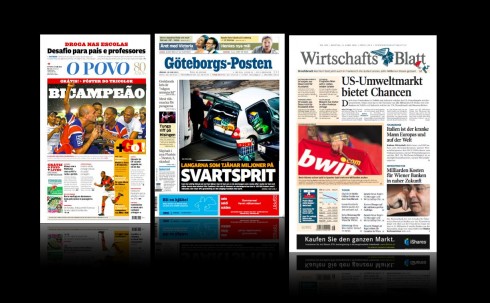
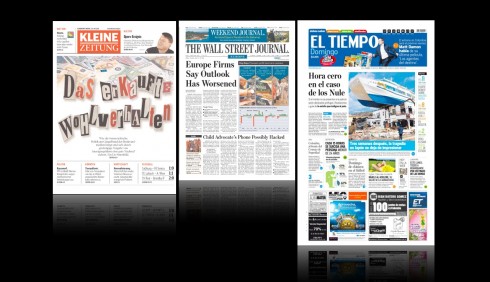

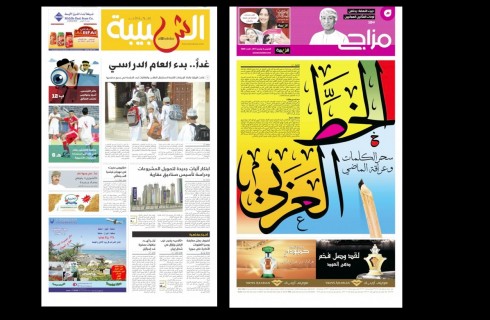
Just a few that stand out for the power of the Group Creative:
Die Zeit, The Wall Street Journal, El Tiempo (Colombia), Paris Match, The New Paper (Singapore), O Povo (Brazil), WirtschaftsBlatt (Austria), Novedades (Mexico), La Gaceta (Argentina), Kleine Zeitung (Austria), Arhus Stiftstidende (Denmark), Goteborgs Posten (Sweden), Il Secolo XIX (Italy) and Times of Oman and Al Shabiba (Oman)
Creativity and Managers
You may be curious.
You may be extremely creative in seeing relationships and modifying them to adapt to the realities of today.
However, all of that needs the encouragement and reinforcement of managers who reward their most creative people.
Creative people benefit from the power of leadership.
I have had the pleasure of working with very creative managers, and here are the characteristics of the creative manager, in my view:
1. Creates a compelling vision, first, by getting everyone to buy into a shared vision, which should be clearly presented and identified. Good managers make it easy to translate vision into action.I have seen this time and time again, which is why it is so difficult to create timelines for projects based on previous experience. When the vision is clear, well presented and shared, then creativity shifts into action and the timeline to the finish line can be reduced sharply. Non creative managers, lacking a vision, usually have a tough time getting the creative people in their team to rally to the occasion.
2. I think that creative managers have a reservoir of passion that takes their people to a new place—-make them dream. Oh, I should have said earlier: the creative have the ability to dream big, and carry those dreams to the next level.
3. A creative manager creates a climate of trust-—-allow people to disagree, to innovate in the process, and, of course, to fail. The creative must be willing to fail, think Steve Jobs and his 7 products that failed, among them some spawned by his company NeXT.
I feel very strongly about my own mantra as I work with quite diverse teams globally: Let the best idea win. When we start a project, I immediately tell the team that this is not ONE person’s project. Let’s start with a clear vision of what we wish to do. Let’s write a short protocol of what the goal of the project is (These days I favor a Twitter version of the protocol). Then we all go to work, and let the best ideas come to the front. Then, eventually, the best idea wins. Everyone benefits, especially the readers or users.
Ultimately, the environment in which we all work is either encouraging towards creative pursuits (with all its risks and advantages), or hostile towards it.
One thing is for sure, in almost every project I have been involved the past 40 years, there has always been some of the two. It is inevitable in a newsroom today not to find the die hard editors who refuse to advance to the next level, who believe that any work on digital platforms is an act of treason to the printed product. Hostility has a way of getting in the way here.
My take? Ignore it. Don’t spin your wheels with these negative types. And, sometimes,the creativity that comes forth is enough to gain them over. But, don’t count on it!
Blessed with creative encouragement
Overall, my experience with management in over 580 projects to date, has been positive.
I am happy to say that more often than not when I asked managers the question: What if?, the answer usually has been, Why not?
I am also proud of the teams I have been involved with, who took the Why not? as a mandate to create, to innovate and to take the product to the next level.
Did we sometimes experience frustration and even failure? Of course, it is part of the dynamics of entering the world of the creative.
Remember, no pain, no gain.
Free your creative mind
And so, when I show that Joe Zeff image and remind participants in my workshop about the basic requirement of the most creative people for tablet creation, I really mean it. It is a call for everyone in attendance to free his creative mind.
How do we free our creative minds?
Take in the information available and provided by the project briefing.
Do instant processing, allowing instinct to rule. Here I usually dig into my subconscious for everything I ever experienced. Let random sensations move forth.
Quickly output something: a quick hand drawn sketch, or a scribble on the screen. The best thing to do is to transfer that creative moment into something tangible, or it may fly away for good.
Refine that thought. But, I have learned, nothing beats that initial outburst that comes after a good briefing. Indeed, you do see the light, and when you do, put a shine on it.
Don’t let reality factors grab you in this early stage of creativity; the reality factor should only come into play after creative instincts have been given free rein—after the seed has sprouted.
I will stop anyone in the team who begins to remind me WHY something can’t be done. “Not now, not today,” i remind them. Reality will catch up with all of us soon enough, but it should never happen in the early stages of creativity.
Let every project begin with what I call “the fantasy stage”, a certain land—-Shangri La?—- where everything is possible.
Because it is.
The moment you start thinking that it isn’t, well, then, that’s when you bid goodbye to creativity. Often when people ask me about my retirement plans, I always think of this.
As long as you wake up in the morning thinking differently of what can be, of all the possibilities, then no matter what your chronological age may be, you are in a good place to take your craft to the next level.
It is a place I like.